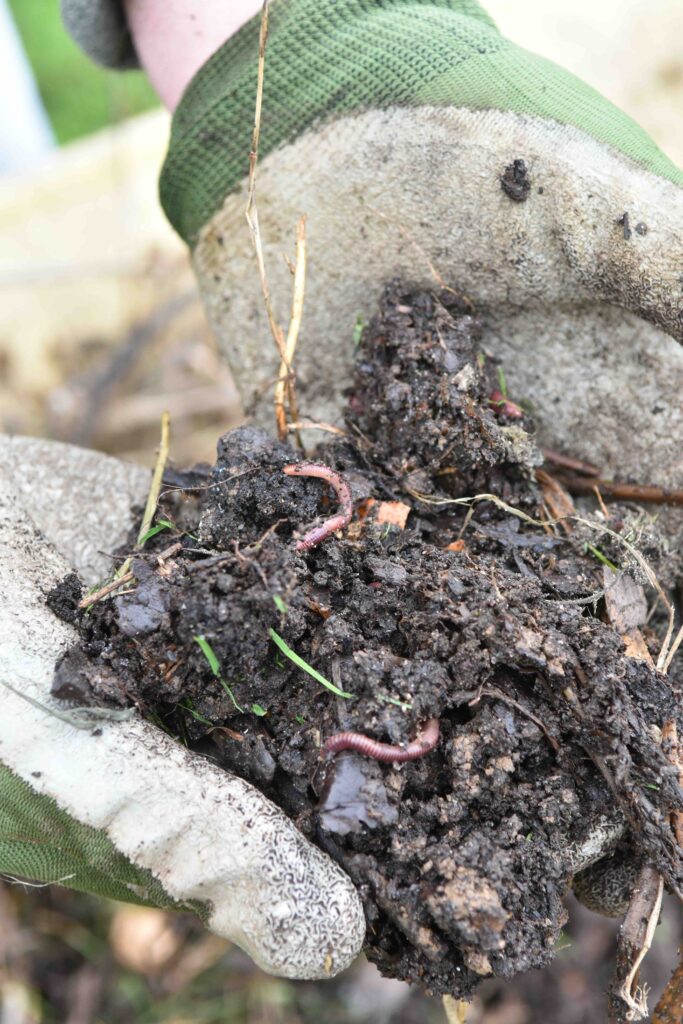
One of the best ways to recycle, reduce your carbon footprint and feed your garden is to make your own garden compost. It is not difficult and most people can do it and you can produce material suitable to dig in the soil or use as a mulch to feed your plants, help retain soil moisture and improve your soil.
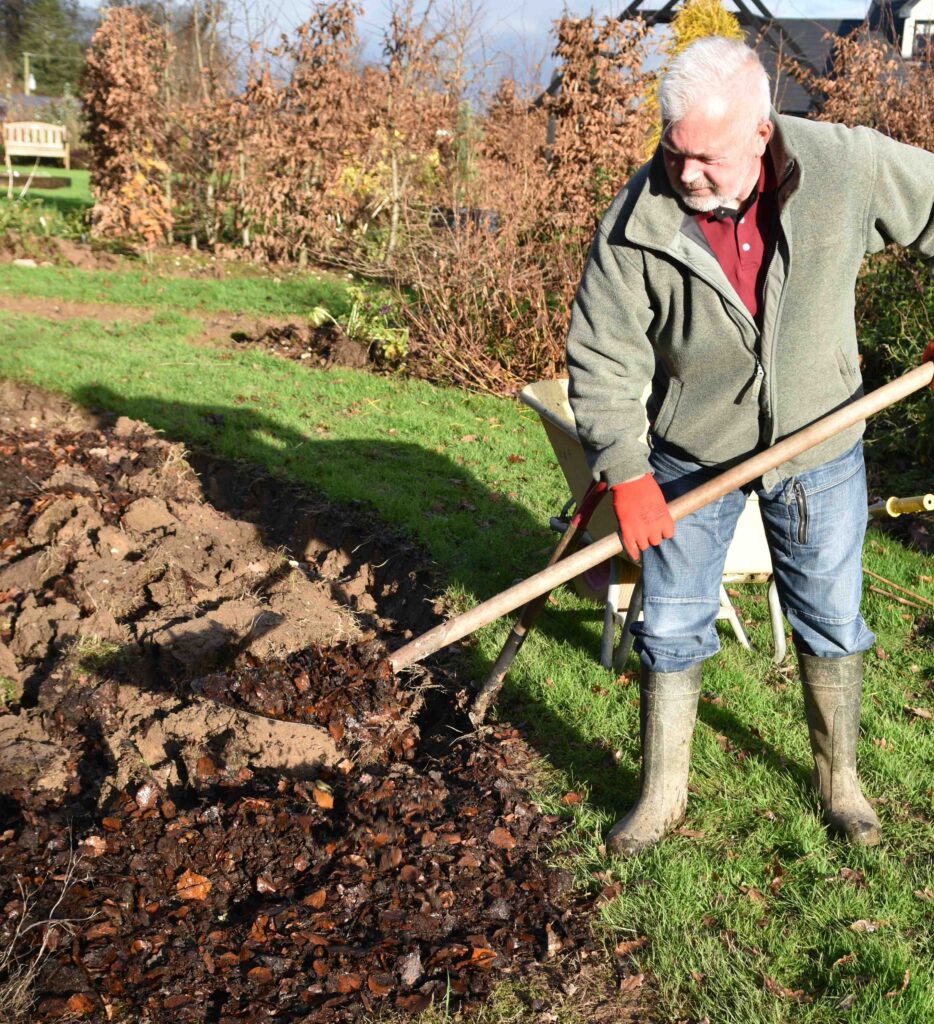
What you need
Although you can make compost in plastic bags, it helps to keep thing neat if you use a compost bin. The cheapest and most widely available are plastic ‘Dalek’ types. Whatever you use it is best to have a lid to keep out excess water. The best have sides that insulate the heap and wood, though it eventually rots, is ideal. A heap needs to build up heat as the bacteria ‘work’ but air needs to get in too, so the bacteria can thrive, so slatted wood wins again. The sides will never be as ‘hot’ as the centre and the optimum size is about 1m square – a reason why so many people make compost bins from old pallets.
(Although not perfect, I use old ton bags that held building sand and gravel when I did the hard landscaping. I could not bear to just throw them away. Five of them are held in wooden ‘cages’ that held paving. It is not ideal but works reasonably well in an area at the edge of my garden). I mention this to show that you do not have to have perfect equipment.
You need to make sure the bacteria have moisture and a supply of food – mostly nitrogen. This is why many people add a product like Garrotta or an activator to the heap.
Apart from that you just need to add material to the heap.
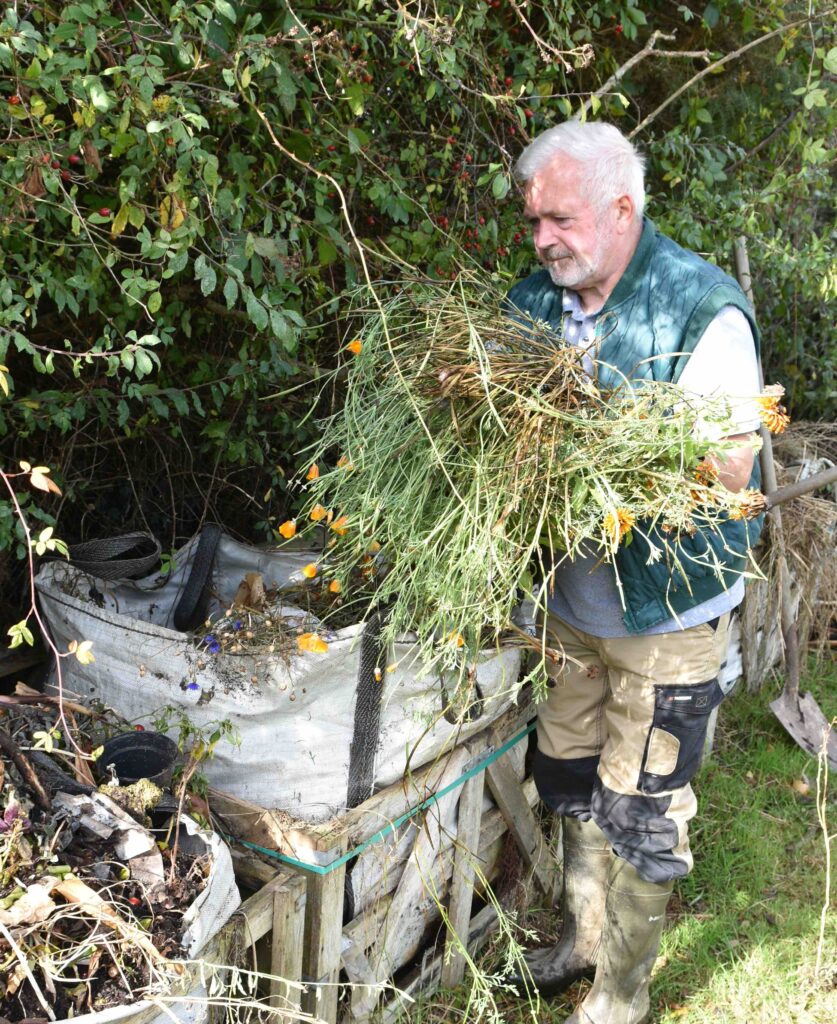
What can you compost?
You can compost most plant material including kitchen waste, weeds and old bedding plants. Do not add cooked food or animal products.
Now the complicated bit!
You need to mix ‘woody’ and ‘green’ material to make good compost.
Soft, green material such as veg waste, lawn mowings and annual weeds provide nitrogen and moisture that the bacteria need to decompose the woody waste. Woody waste, such as dry leaves and stems, straw, cardboard and shredded woody stems, will form the bulk of the eventual compost but will not decompose well on its own.
Think of it in comparison with your own diet: you need protein and simple carbohydrates for energy but you also need rough fibre that your gut cannot break down.
To continue the analogy, the bacteria are more effective if the components added to the heap are in small pieces so each piece has a large surface area compared to volume. That is where a shredder is useful for woody pruning. Think of how you should chew your food properly!
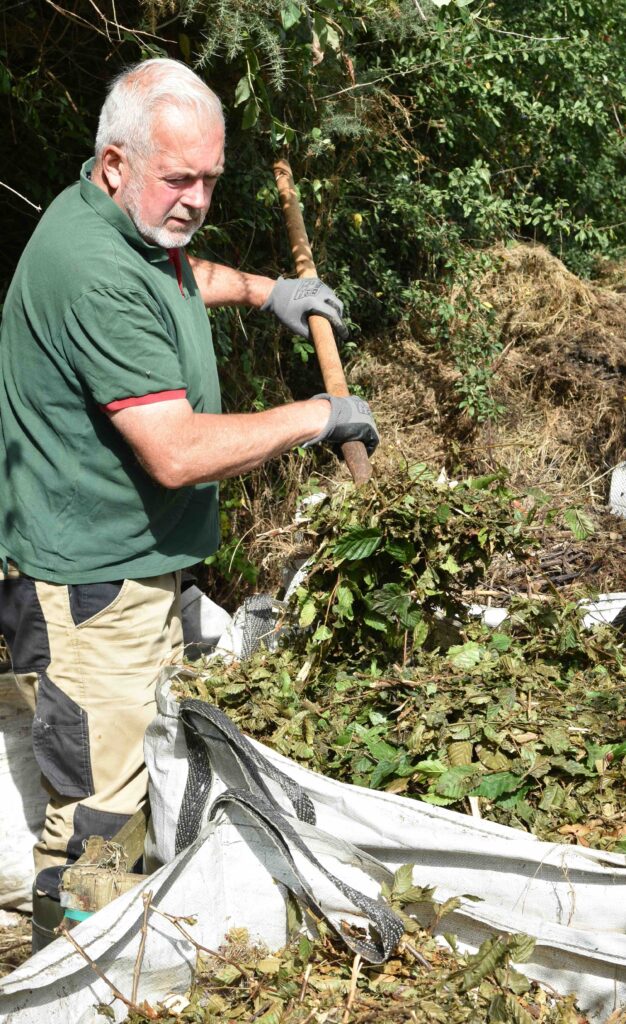
So you need a mix of all types of material. If you add just grass trimmings and soft material to the heap it ‘slumps’ and is stays wet and there is no oxygen for the ‘good’ bacteria that produce the heat to kill weed seeds and disease. You end up with a slimy, smelly mess. On the other hand, if you try to compost just dry, woody material and do not add any water, or green material you get little change. If your compost heap is full of woodlice or ants it is too dry. If your compost is full of worms it is usually a sign that it has stopped being active, is cool, and can be used on the garden.
If you can, have two or more compost heaps. You can fill one as you get the material and then, when it is full, transfer the contents to the second bin, mixing it as you go. You can then refill the first bin, over time, and then empty the second bin and repeat.
You can add an activator to the compost ,as you go, to speed up the process. A source of nitrogen is helpful, either dried blood, hoof and horn or your own home made activator, whether comfrey tea or something less complicated! I wont go into detail. If you have access to horse manure or sheep dung or even rabbit droppings (all vegetarians) then add them to enrich your compost but never cat or dog faeces.
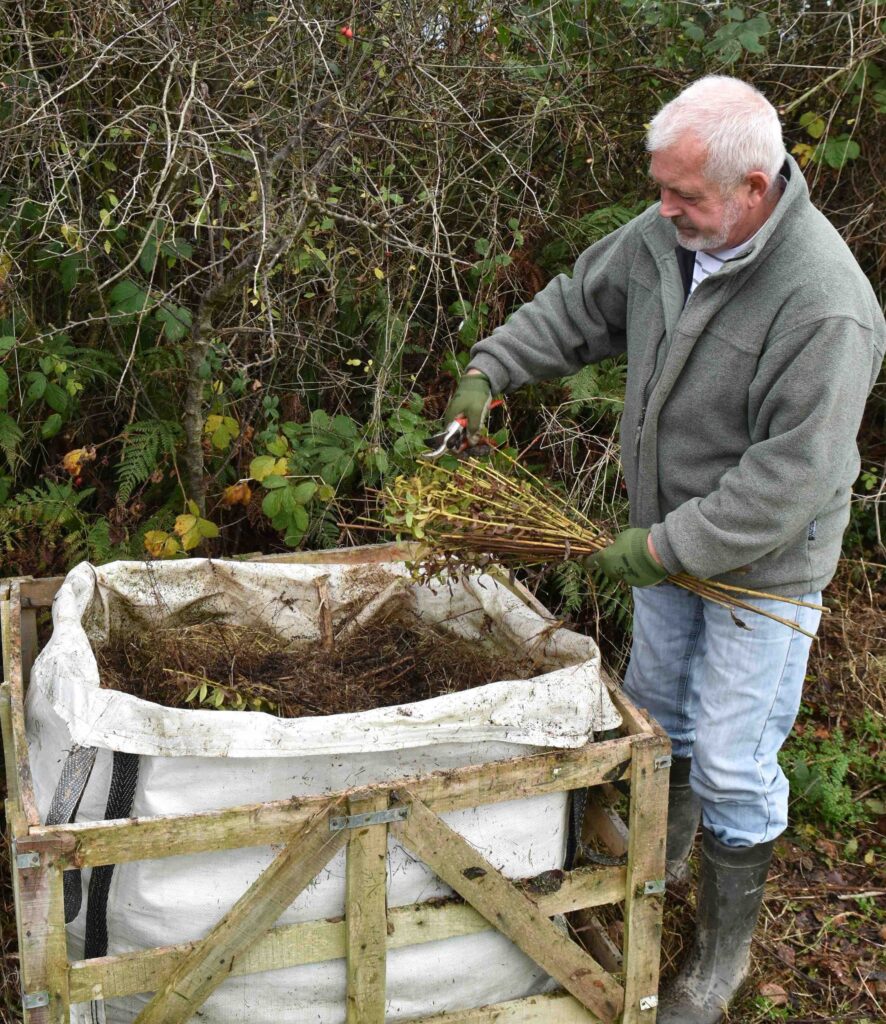
Your compost will be ready in six months to a year if you turn it and keep it moist. Dry fallen leaves will take longer but if you mix them with grass mowings (when you mow the lawn) they will be usable as compost in a year. If you shred them (never leaves that might be mixed with stones or gravel) through a shredder they will make compost more quickly. If you have lots of fallen leaves it is best to compost them on their own. Leaves vary in how quickly they decompose according to how ‘woody’ they are – (the levels of lignin). Beech and Oak take the longest but also produce the best compost or leafmould.
These are the basics. Old books suggest adding materials in layers but mixing it up is best. You can add some soil to inoculate the heap with bacteria but if you add weeds pulled from the soil, you will be adding some soil anyway. You can also buy compost containers that can be ‘turned’ usually with a handle. These only hold small quantities or they are too heavy to ‘turn’ but they do speed up decomposition hugely and are perfect for small gardens.
With the leaves already dropping and lots of old plants to cut down or pull up, make the most of the potential treasure in your garden.